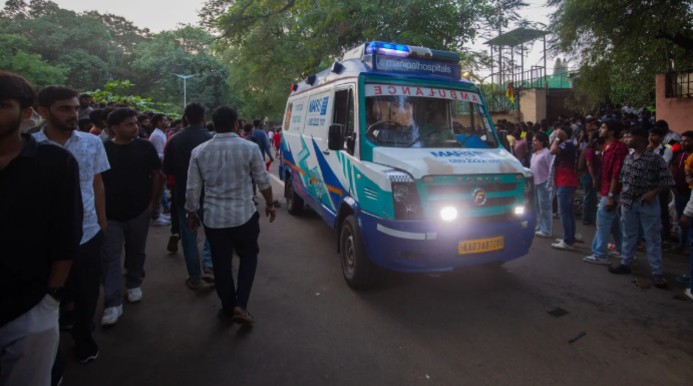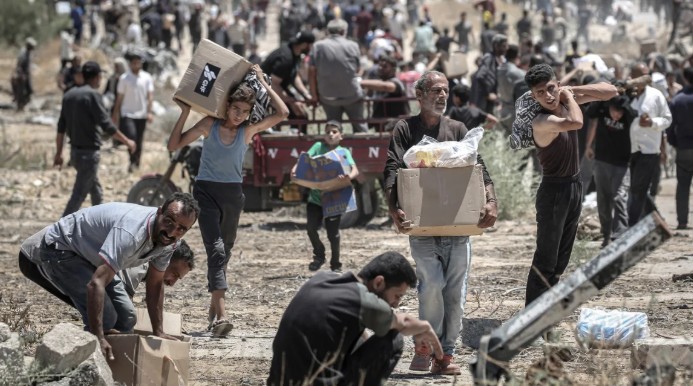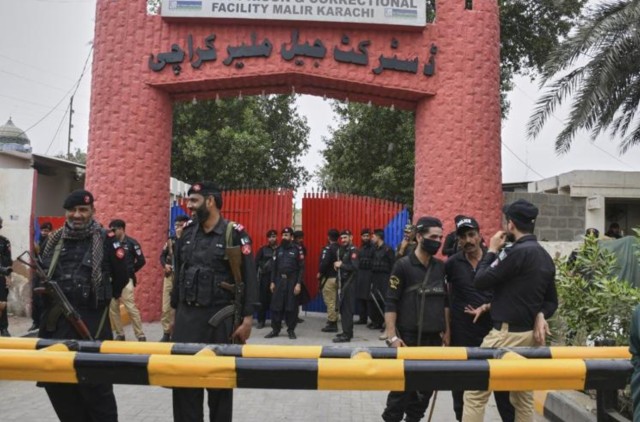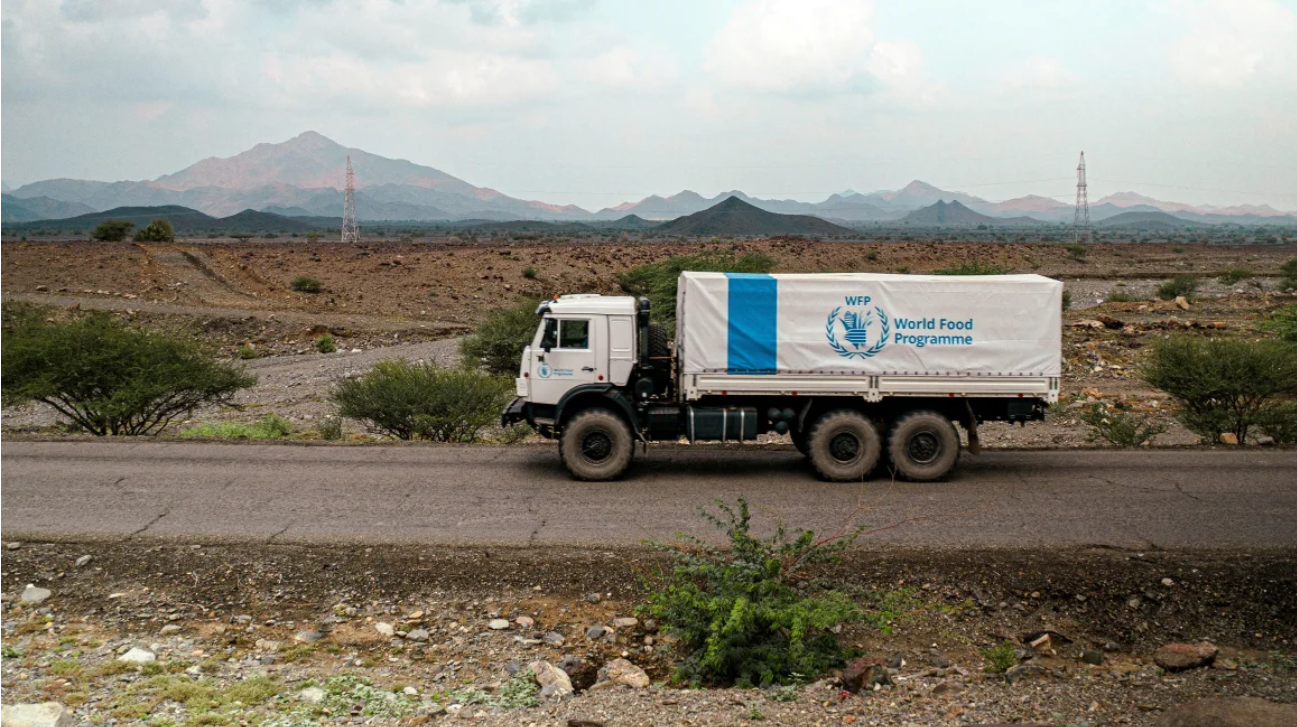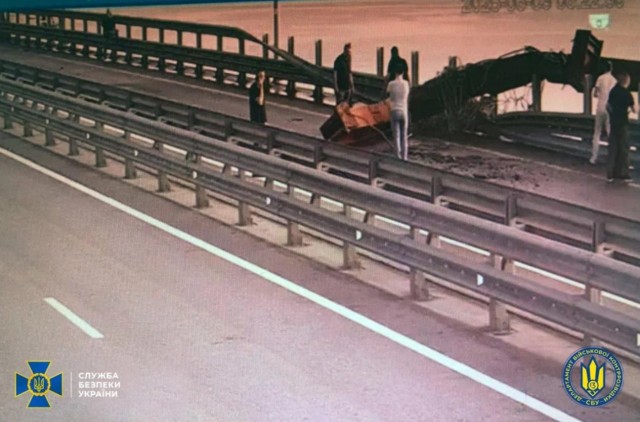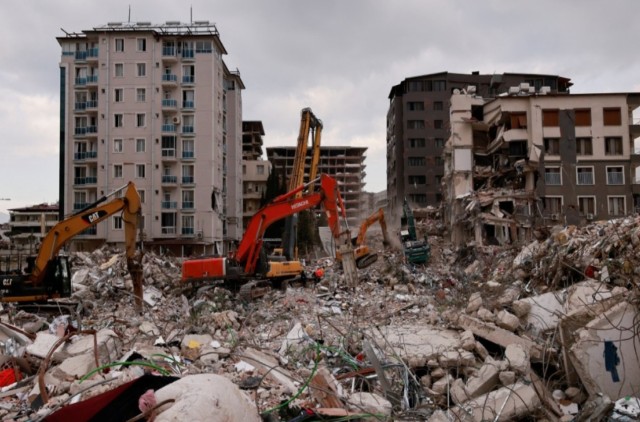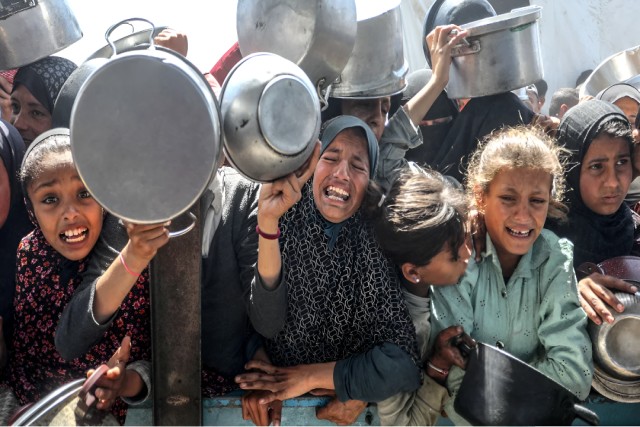
Displaced Palestinians receive hot meals distributed by aid organizations in al-Mawasi area of Khan Younis, Gaza on Tuesday
Iman Rajab sits inside a tattered tent in Gaza City, sifting contaminated flour scavenged from a dumpster as Gaza families fights hunger. Her six children depend on the bread she makes with it, even though it makes them sick. “It smells horrible,” she says. “But what else can I feed them?”
As Gaza enters the third month of Israel’s total blockade, scenes like this are growing tragically common. Food is almost gone. Famine is looming. And desperation is escalating.
A Man-Made Catastrophe
Israel’s siege on Gaza began nearly two months ago. No trucks carrying food, fuel, or humanitarian aid have been allowed in. Israel says the blockade is meant to pressure Hamas to release hostages. But aid organizations accuse Israel of violating international law, with some calling it the use of starvation as a weapon of war.
The World Food Programme (WFP) recently confirmed that its Gaza warehouses are empty. Soup kitchens are down to their last rations. The little food that’s still available is wildly overpriced—flour now costs as much as $100 a bag.
Hunger Fights Sparks Chaos Over Gaza
On Wednesday, thousands of hungry residents stormed a UN-run school and aid warehouses in Gaza City. Hoping to find scraps of food, people—men, women, and children—broke into buildings in the Rimal neighborhood. Some were searching for flour and canned goods. Others looked for tarps, tents, and batteries.
Gunfire echoed as armed guards tried to hold back the crowds. But hunger proved more powerful than fear.
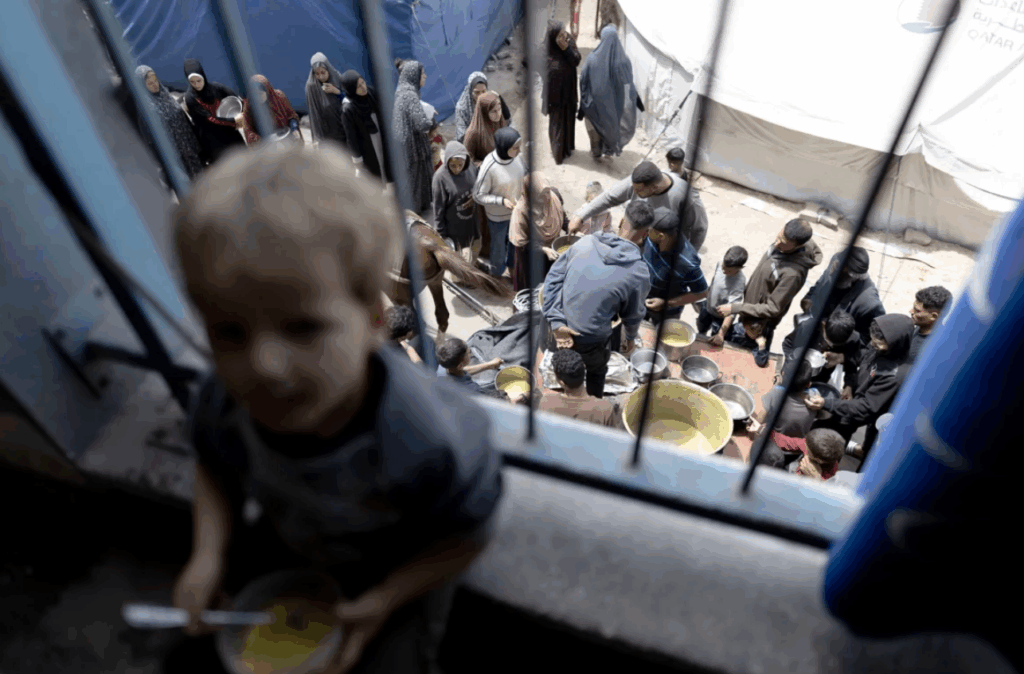
Child Malnutrition Surges
Malnutrition is spreading fast, especially among children. According to the UN, 3,700 children were diagnosed with acute malnutrition in the last month alone—an 82% rise since February.
Five-year-old Usama al-Raqab weighs just 20 pounds. He should weigh double. He suffers from medical conditions that require a special diet—fats, proteins, and vitamins now impossible to find. His mother says his skin clings to his bones. “He can barely walk,” she whispers. “Even touching him hurts.”
Aid Just Out of Reach
Yasmin Maydhane, the WFP’s emergency coordinator in Gaza, stood inside a bare warehouse last week. “Our supplies are depleted,” she said. More than 400,000 people were relying on hot meals, and now even that is fading away. Aid is ready and waiting just outside Gaza. The UN says nearly 3,000 trucks full of supplies could feed the population for two months. But without Israel opening the border, none of it can enter.
International Pressure Mounts
European countries like Germany, France, and the UK have urged Israel to allow aid in. But the U.S. has backed Israel’s strategy. President Donald Trump’s administration has supported using aid as leverage to pressure Hamas.
Ambassador Mike Huckabee recently rejected pleas to open the crossings. “Let’s pressure Hamas,” he said. “Once they release hostages, we hope aid will flow freely.” But many in Gaza can’t wait any longer.
Hope Fading on the Ground
In al-Nuseirat, hundreds of people waited for hours in front of a soup kitchen last Friday. It’s the only meal most will eat all day.
An elderly woman named Aisha shielded herself from the sun with an empty pot. “We are starving,” she said, barely able to speak. “Death would be easier than this.”
Near her, Abu Subhi Hararah held up a pot, pleading. “How can this feed eight people?” he asked. “Who do I choose to feed—my wife or my son?” Tears filled his eyes as he looked at the crowd. “Our children are dying from bombs and hunger,” he cried. “Have mercy. We’re only searching for a bite of food.”
The Clock Is Ticking
As Gaza starves, aid sits blocked at its border. People are dying. Children are wasting away. And the world watches as time runs out.





